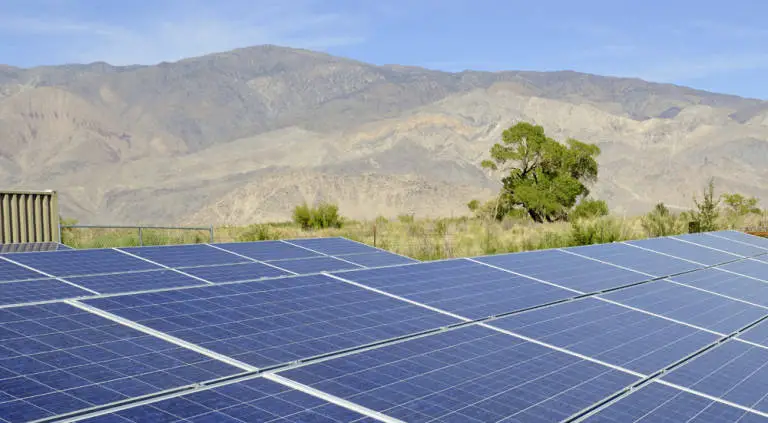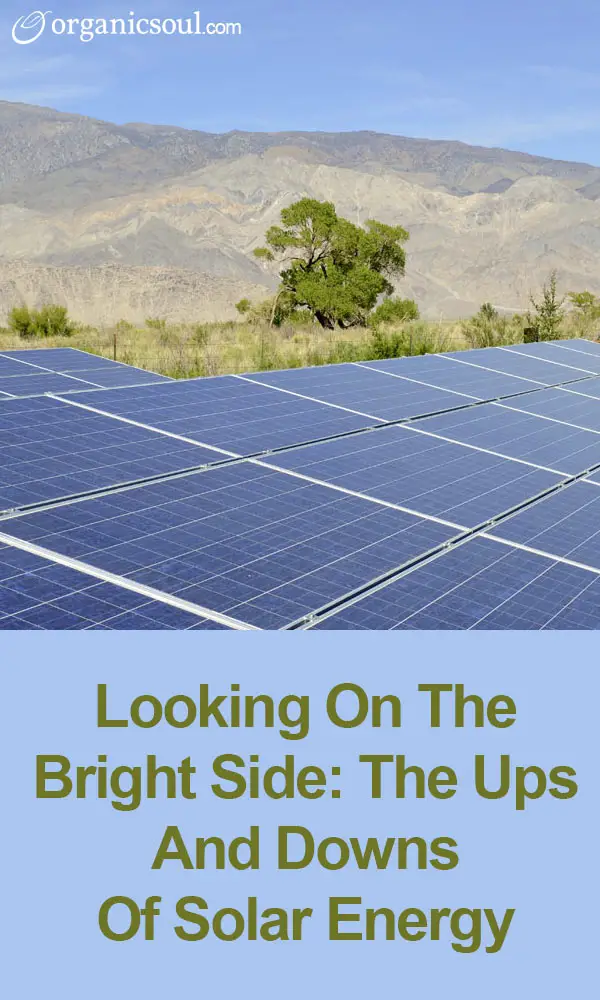
A great deal of the time, my friends approach me with zany ideas for get-rich-quick schemes. Invest in this, create that, market this. But nothing is ever very substantive or practical. That said, I was taken aback recently when one of my good friends suggested we invest in solar energy, or even start a business in solar – but this time, he was serious and straightforward.
Like Organic Soul on Facebook
Unfortunately, the solar plan too was never fully substantiated… Surprising? Not so much.
Regardless, it got me digging on solar energy. What are the pros and cons of solar? There is plenty of celebration surrounding it, yet how much of that amounts to mere noise rather than veracious appraisal?
The Science behind It
Anyone who has taken a science class knows that the sun produces energy. This massive fireball over a hundred times the size of Earth shines light into our solar system and onto our world. This light supports nearly all of life on Earth through photosynthesis and it is the engine behind our climate and weather.
Harnessing this power is the goal of solar energy, and there are two ways of doing so.
First, there are Photovoltaic devices – aka PV devices or “solar cells”. These transform sunlight directly into electricity. On these cells, a thin semiconductor wafer is specially treated and designed to create a small electric field. Once light hits these cells, electrons are “knocked loose” from the atoms in the semiconductor, forming an electric current, which is then captured in the form of electricity.
Second, there are Concentrated Solar Power Plants. These generate electricity through the form of heat generated by the sun. This is also called thermal energy. Here, the process is similar. Once the solar plate collector begins interacting with sunlight, the plants produce energy. However, unlike solar cells, the energy from the collectors is funneled to a fluid-filled chamber that in turn produces steam. This process translates into raw energy. Some say it’s appropriate to make the analogy to a “high tech version of a garden hose sitting in the sun.”
The Benefits
The benefits to solar are real, and they can be broken down into three categories: economic advantages, environmental advantages, and social advantages.
First, the economic advances include the fact that solar energy can be installed at a much faster rate than other forms of energy, traditional and renewable alike. Coupled with this is the fact that solar energy devices last a long time, which is due to the groundbreaking technology and lack of moving parts. Furthermore, because solar cells operate at their peak performance during the day, they fall right in line with the time of peak consumption. Finally, the fact that solar energy pricing is generally predictable and practical for many people’s budgets, there is a reduced need for extensive infrastructure build up.
Environmentally, solar energy produces zero emission when in use. These devices run silently and are visually unobtrusive. Plus, wherever sunlight is found, solar energy collectors can produce energy. It’s promising to know that the only energy source solar devices are dependent on is the sun, which should be around for awhile. Finally, with more solar, we need less of other forms of energy that traditionally produce more emissions and pollutants.
Lastly, there are substantial social advantages. First, it’s an investment in the future. Solar energy promises clean, renewable energy for the people of today as well as the people of tomorrow. Because of this, the country will be granted additional energy independence. This, in turn, also creates jobs necessary for the upkeep, production, and advancement of solar energy. Lastly, because solar energy is a distributed generation energy source (meaning decentralized), it can actually alleviate national security concerns regards energy disruption. In other words, once people have solar technology, they will have their energy.
The Drawbacks
There are some drawbacks, however, which mainly affect the practicality of solar energy. First, solar energy requires the sun, and the sun isn’t always shining. It depends on time of day, time of year, weather conditions, and even shade. This makes it to be a variable energy source.
Second, in order to collect solar energy at an effective rate, producers must develop a large surface area. This helps increases the rate of electricity production, but also then requires for more time, energy, and money funneled into the development of infrastructure.
Lastly, there is a problem of high initial costs to solar energy. For most people, being able to invest in solar energy can be a bit pricey upfront, making it lose some of its lucrative environmental incentives. True, you make your money back, but only after a long time.
Looking On the Bright Side
Regardless of the shortcomings of solar, it has already proved itself a renewable resource worthy of serious consideration and investment. As the technology progresses, the capacity to distribute and integrate solar energy systems will expand, promising a bright future for years to come.
The truth is, solar energy (along with biofuels) is probably going to become one of the most competitive fields in the next few years to a decade. You can expect rapid investment in clean energy, and (so far) the best choice is solar. That said, start saving now, and when the solar bubble begins to rise, invest!
















